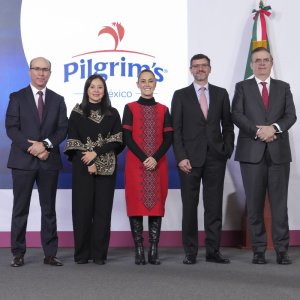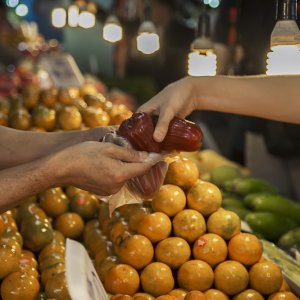Mexico Well Positioned for Aquaculture Growth — and Investment

STORY INLINE POST
Supply chain crunches, tense global trade relationships, economies in a post-pandemic recovery phase, and most recently, a complex global military conflict on the European continent. There is no question that the global economy is fraught with uncertainty.
2022, the year earmarked to build back national economies, is a turn of the page onto the next chapter of our lives. We have the opportunity to look back at the last two years and tally up the damage; seeing which industries were hit the hardest by the COVID-19 pandemic and which ones thrived. The biggest victims were clearly the industries reliant on travel and social interaction, while on the other end of the spectrum, among the biggest winners were those related to personal health. Surprisingly, the seafood industry saw records broken both in volume and in profits despite the food service and hospitality industry’s woes, propped up by peculiar consumer behaviors that drove up demand for healthier food options during the brunt of the lockdowns.
During times of volatility, we tend to see investors run toward secure options like bonds and gold, waiting and weathering out the storm before venturing back out into the broader markets once risks have subdued. One of the places where we didn’t see this happen was in the aquaculture industry where there was actually a 4.46 percent increase in global investment between 2018 and 2022. On one side, growth was already on route as aquaculture is projected to supply 89 percent of the world’s seafood by the year 2030, according to a report by the FAO, but, more importantly, investors saw an opportunity in the skyrocketing global demand for sustainable, quality seafood.
Public policy, environmental conditions, and capital come together to create opportunities for national economies and investors. We see case studies of successful collaboration between these three components in countries like Norway, where aquaculture has grown to be a robust, world-class industry. At the closing of 2021, the country exported a total US$ 9.7 billion worth of seafood, an increase of 16 percent from 2020. Certain countries have seen the success of the Norwegian industry and are doubling efforts to promote the development of the aquaculture industry within their borders. Such an example is Scotland, which has committed to strengthening its presence on the global seafood market through support from regulators, academic institutions, and, more importantly, from residents to attract investments. Likewise, we see unexpected players — Middle Eastern countries, such as the UAE and Saudi Arabia; and sub-Saharan countries, such as Ghana and Nigeria — jumping into the game and entertaining investors with the idea of working together to supply this tremendous demand, which has no sign of abating anytime soon.
We see a perilous example of the pendulum swinging in the opposite direction in Canada, where public perception of aquaculture has been tainted by activists who have pushed regulatory bodies to take a negative stance on the industry and threaten to impede the industry’s development; an industry which by the way generates approximately US$5.1 billion in economic activity and sustains over 25,000 full-time jobs. Such is the case with inshore salmon farms around the province of British Columbia, where permits are up for renewal by June of this year. Fortunately, this is a rare example of a negative relationship between the aquaculture industry and public policy.
The industry is alive and healthier than ever, with many countries looking to attract investors to their shores. Mexico is among those that has prime real estate for the aquaculture industry: situated right next door to the world’s largest importer of seafood (the US imports upward of 85 percent of its seafood) and home to some of the most productive temperate waters in the world (nearly 5,000km of prime coastline along its northwestern region). Currently, the country’s aquaculture contributes less than 15 percent of the total seafood production compared with Norway, where aquaculture contributes upward of 80 percent of its total seafood production.
This shows that Mexico offers the industry a great opportunity for growth as the market has plenty of room to expand and help investors get an early stake in the ground. At Aquaculture Advisory, we have seen more and more investors turn to take a look at Mexico as an opportunity for investment as they now see aquaculture as a secure and reliable investment option thanks to the trial by fire that the global economy has gone through the last two years.
Providing a unique opportunity for sound financial performance for investors as well as a route to economic recovery for Mexico, the country’s public policy will be fundamental to position Mexico as another success story in the history of aquaculture.
























